Last Sunday morning on July 21st, after the peaceful protests, the more radical activists moved to different locations around Hong Kong. One group congregated in Sheung Wan where the police had been waiting. The two sides fell into their well-practiced stances. The performance art of confrontational direct action unfolded on live streams.
A woman’s voice on a bullhorn asks for calm. It’s not clear who she is. The police are in configuration, wearing bulletproof vests and holding body length shields. The protesters are in construction helmets, goggles, with various home-made protective gear, some made with road signs. They are jeering.

Roy Kwong, a pan-dem legislator, stands to the side, negotiating with the police; asking them to stay back and not attack. The officer in charge yells back in frustration. “We won’t charge, if you can get them to disperse.”
The protesters gather further momentum: stomping, hammering bamboo poles—they have found from a nearby construction site—onto the ground, on their shields, even on a plastic large plastic bottle in unison.

A cut away of an older community leader in his 50s. He begs through a bullhorn at the protesters to be “guai,” (behave) and “go home.” He is crying.
It is obvious neither side has any intention of going anywhere except forward towards each other. The man begins to sob as he continues to plead, knowing a confrontation is inevitable.
The jeering increases. Chants can be heard. The rhythmic hammering continues, until it drowns out all the other voices.
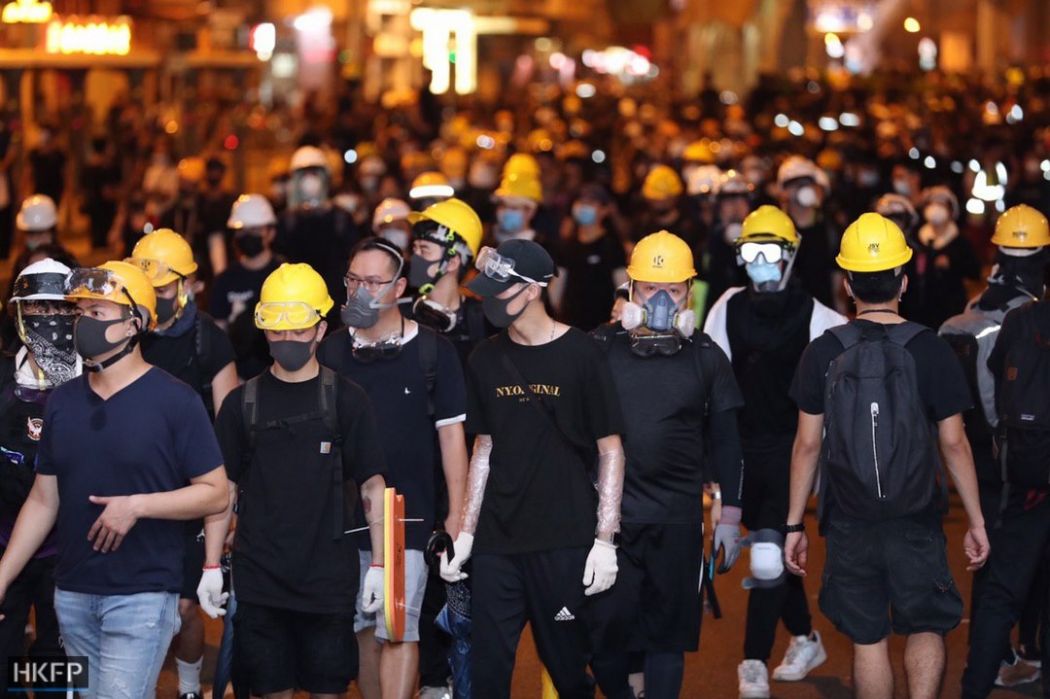
The Hong Kong Democratic Movement can be separated into three phases.
The first started in the 80s and lasted 30 years. It was headed by respectable and foreign-educated professionals, the likes of Martin Lee, Emily Lau, and Szeto Wah. Between them, they created two political parties that still make up the majority of the pan-democrats seats that are elected by the public. They worked within the system and tirelessly educated voters and attempted to negotiate with the colonial government. Despite a large base of support, they never quite captured the imagination with their plodding sensibilities.
The second phase was the galvanising 2014 Umbrella Movement, which was captivating and colourful. The protesters occupied the business district amongst installation art, band performances, and spontaneous political sit-ins. They were peaceful, sincere, and idealistic. Even though they didn’t win any concessions in universal suffrage, the leaders and others followed the footsteps of Martin Lee and their elders into LegCo, until Beijing disqualified them, and removed them from their seats in 2016.
In the following two years, the public watched quietly discouraged as key figures of the Umbrella Movement went through the court system. Some were jailed for inciting public nuisance. The last of whom was Benny Tai, the man behind the concept of the occupation. He was sentenced to 16 months in April 2019.
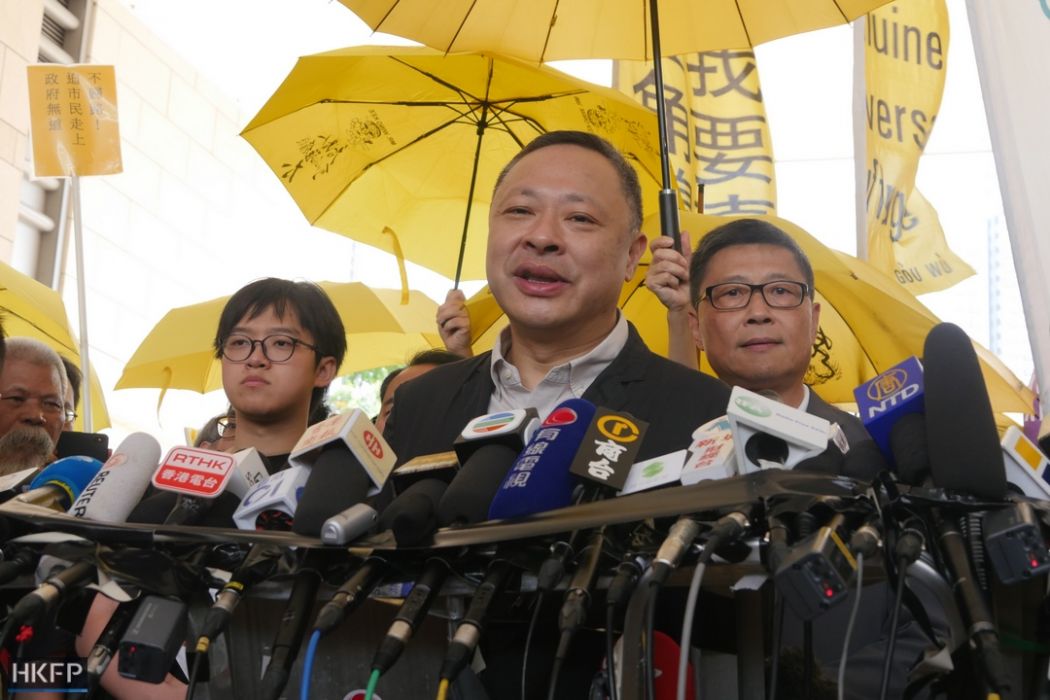
In the same month, slowly brewing in the background was a controversial extradition treaty, which would allow people in Hong Kong to be plucked and dropped into China’s politicised court system. There were incidents—such as a physical fight in LegCo—and the slowly building momentum against the bill. Then on June 9th, the issue exploded onto the world stage when a million people turned up to protest. The government refused to budge. The weekend following, two million people came out on the streets.
The third week of the protests happened to be the 22nd anniversary of the handover of Hong Kong from the UK to communist China. After a number of ever escalating confrontations with the police, the protesters reached a breaking point and stormed the parliament.
Then, a moment of political savviness. The activists decided they needed to make a declaration. After negotiating among themselves, a young man, Brian Leung, emerged to read a statement to the press. He reiterated the following five demands: pulling the extradition bill, giving amnesty to the arrested protesters, for Chief Executive Carrie Lam to step down, for an independent investigation into police brutality, and democracy for Hong Kong. The young people, with no leaders, and who hadn’t planned the action beforehand, managed to codify what the public had been asking for in an easy to digest list, and transformed a movement to stop-a-law into a movement for democracy.
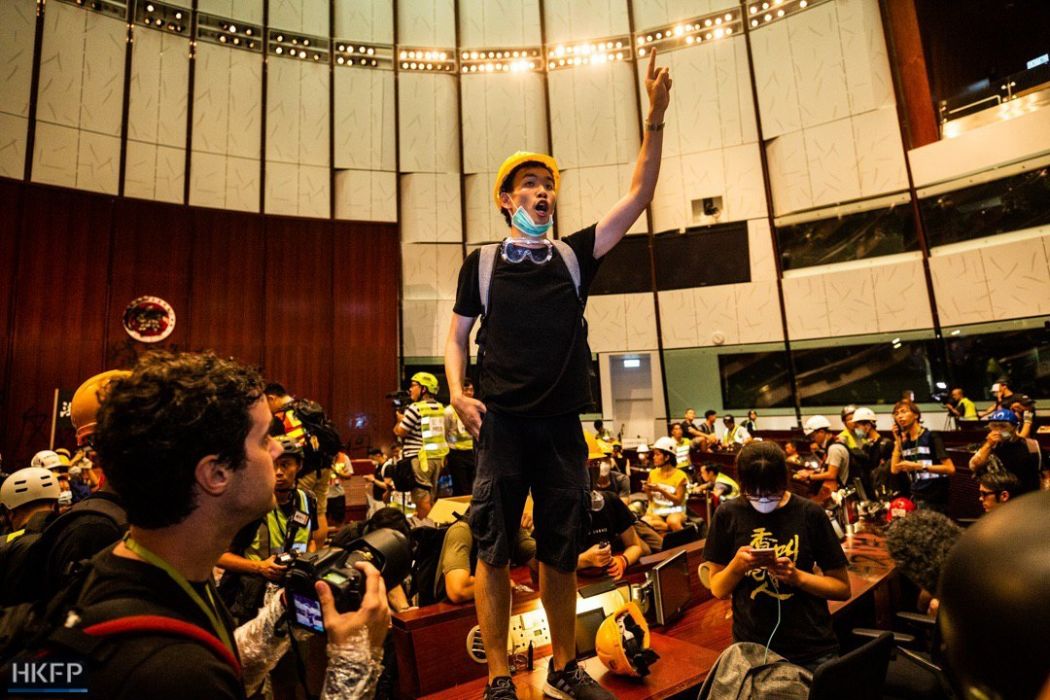
The response was swift. Lam, who had been in hiding for at least a week, came out and condemned the “extreme violence.” Then went onto argue against the demands point-by-point, with the exception of the last one, ignoring it completely. Memes criss-crossed the internet. The pan-dems legislators came out in a press conference demanding “the five big demands” be met, further supporting the activists and their message. More protests were organised around the requests and the public began to switch from calling the events “anti-extradition bill” into simply “Resistance”, heralding the third phase of the Hong Kong Democratic Movement. An angrier more confrontational resistance, with an aftermath that seemed triumphant.

Then within two weeks came a shocking and violent incident at a luxury mall is Shatin. The more hardcore protesters had refused to leave, facing off with the police. In retaliation, the police kettled them from three sides, with the only escape route being the mall. The protesters rushed in. The riot police followed. Those being chased turned and started attacking the police with umbrellas and detritus. In anger the officers began to use their batons and released pepper sprays which terrorised the other patrons in the mall. A plainclothes policeman was pushed down an escalator and beaten by multiple people. One police officer’s finger was bitten off. There were 40 arrests and at least 22 people hospitalised. This was not a violent act towards a building to make a statement. This was real anger from both sides, a losing of control.
Nothing like that had happened in Hong Kong for half a century, and not under Chinese rule. The public blamed the police, as they have done since the beginning of the confrontations. No matter which side of the political divide people stood, it was shocking to see. This new generation of protesters were unimaginable even five years ago, although scuffles with the police, and their use of pepper spray was the norm.

However, these activists did not come out of nowhere. They are forged by Beijing’s policies and created within the SAR. After all, no one under the age of 30 remembers the days of the British benevolent dictatorship. They cannot recall when Hong Kong was run with a hands-off approach, with all the liberties of the West with the exception of the vote. They do not remember smiling governors eating egg tarts, a la Chris Patten, acting half good-natured fool, half-interested tourist, to the fascination of the public.
This young generation have only encountered the cold and harsh leaderships of Donald Tsang, CY Leung and Carrie Lam. They grew up under the shadow of a totalitarian regime, with the clock ticking towards being swallowed whole. Yet, they still managed to pick up rubbish after themselves, grow organic gardens on plots of land on the side of the road, remaining joyful and “guai” for 79 days of street occupations. But for all their efforts, they found a disinterested and arrogant Carrie Lam at the negotiating table with their chosen representatives. Not to mention, to add salt to the wound, she was then picked by Beijing and 777 people to be the next Chief Executive in the rigged election they tried to fight. It’s no wonder they are cynical and angry. It’s no wonder they are not remorseful when faced with broken windows, tear gas, and rubber bullets. This generation can be summed up by the graffiti, “You’re the ones who taught me peaceful protests don’t work.”
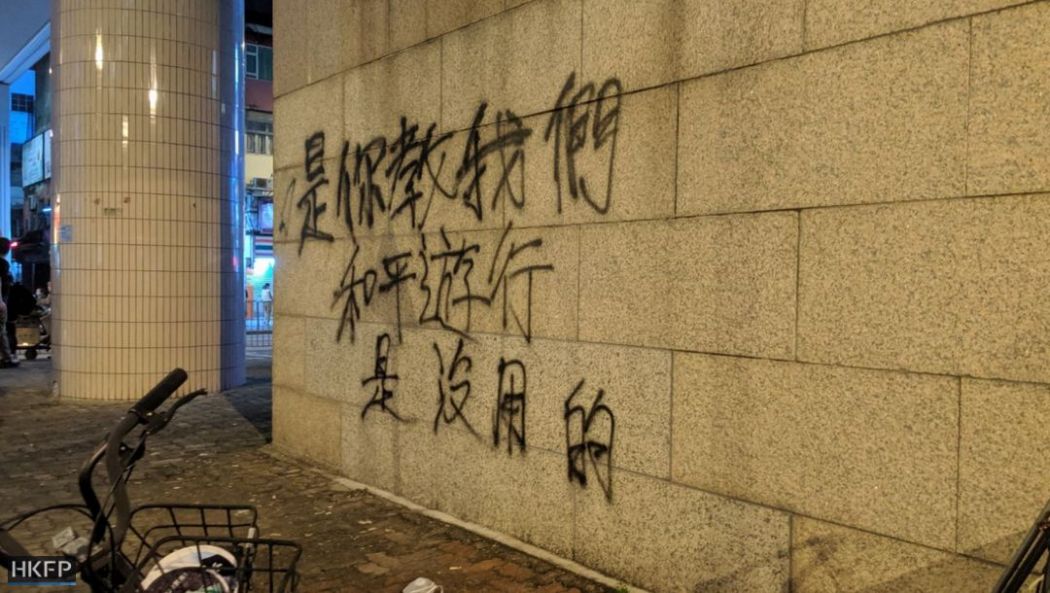
Even though the more destructive protesters are small in number, many who don’t participate in confrontations practice everyday resistance in support of those who do. Money is left on ticket machines at MTR stations, so the remaining protesters can make quick getaways. Others donate supplies before they leave for safety. On the walls of innocent-looking Post-it notes are comments encouraging the protesters and criticising police actions. Not so innocent chants like “Restore Hong Kong. Revolution is now,” are slipped in the middle of peaceful protests. Most of all, the more peaceful resistance continue to stand with the radical protesters by calling for their amnesty.
The movement, as a whole, is hard to pin down, and the boundaries blurry between the more conservative and the more radical. For this generation, there aren’t any visible leaders and the participants aren’t outspoken in public. Covering their faces, the new resistance have taken up a motto of invisibility and camouflage. “Be water,” they say, repeated the words of Hong Kong’s much loved son Bruce Lee.
“You must be shapeless, formless, like water. When you pour water in a cup, it becomes the cup. When you pour water in a bottle, it becomes the bottle….Water can drip and it can crash. Become like water my friend.”
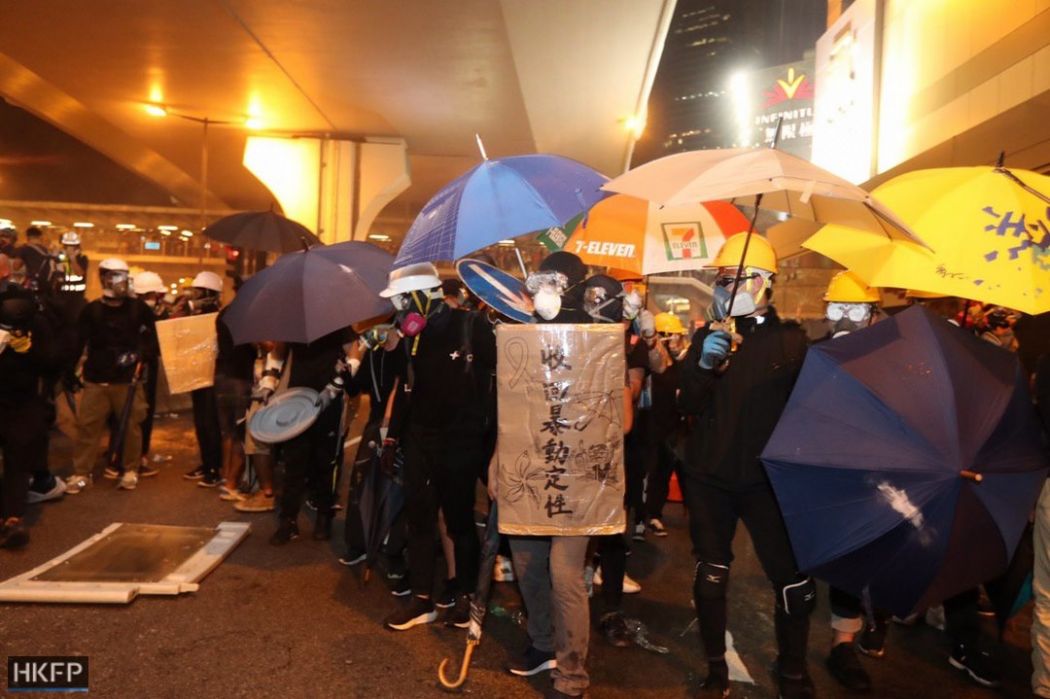
They chose that, because those in the resistance are aware they are treading on dangerous territory. Unlike their counterparts in China, this new generation have grown up with news footage of tanks and bullets against people even younger than themselves now. If they trusted the Chinese government for their benevolence, they would not fight the extradition treaty as vigorously as they have.
It’s easy to dismiss this generation for being naive. For being reckless. That with their anger and actions, they are bringing the end of Hong Kong closer than it would have come if they just left it alone. But expecting them to stop by chastising them would be as effective as those who were there that early morning. Why should they listen? The criticism is mostly coming from people they despise or from those whose lack of success has directly influenced their mentality. After all, they know they cannot leave the cause of the resistance undone. Theirs is the last generation to fight for Hong Kong’s freedoms. There is no leaving it to the next, because it’s their children who will be silenced.
